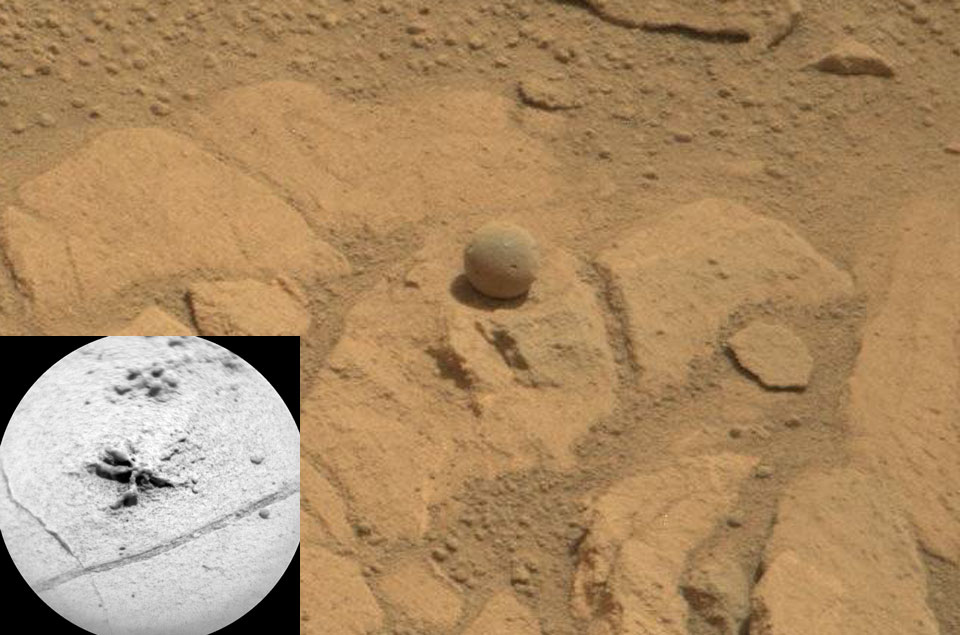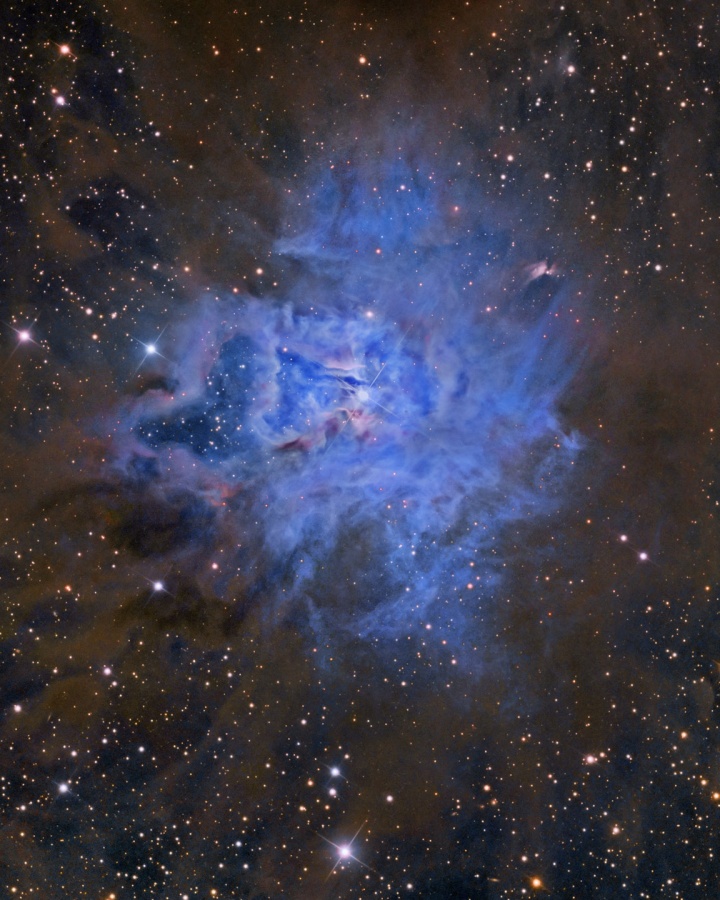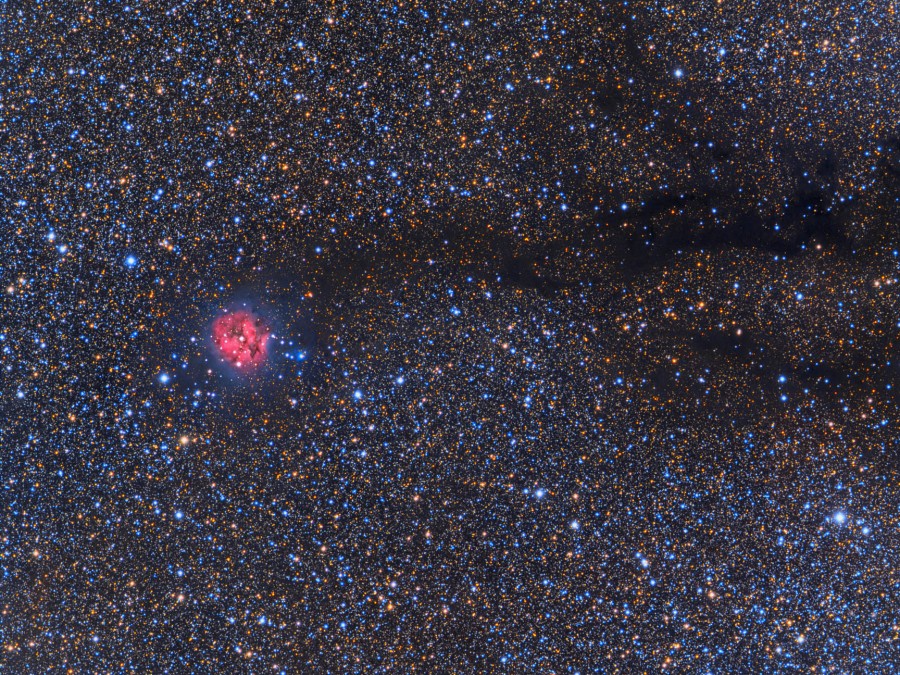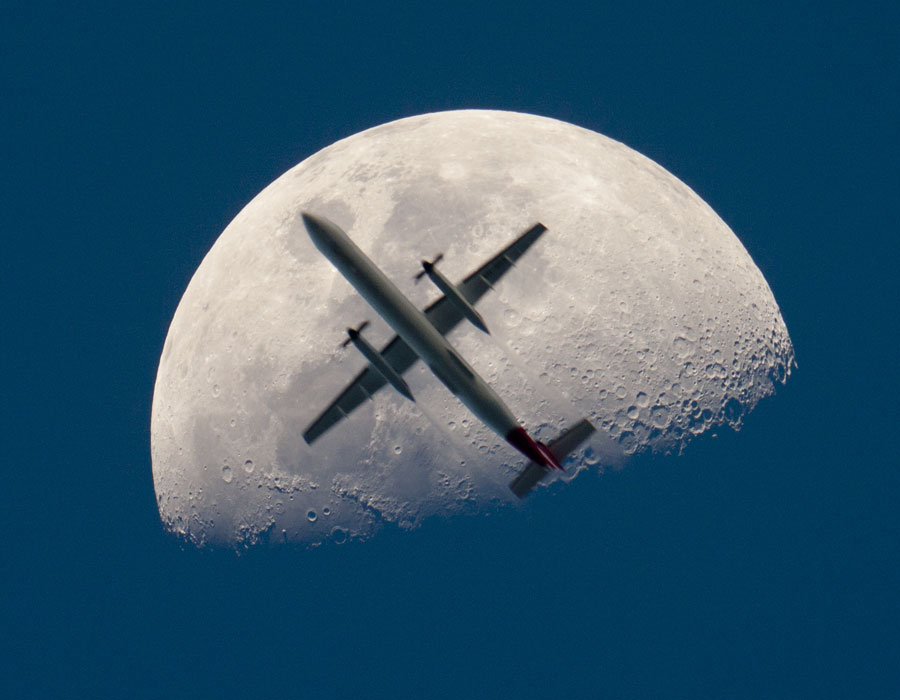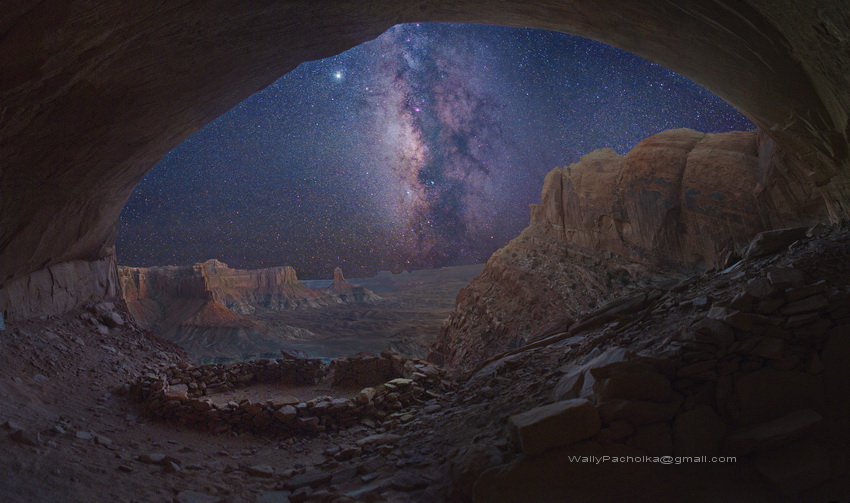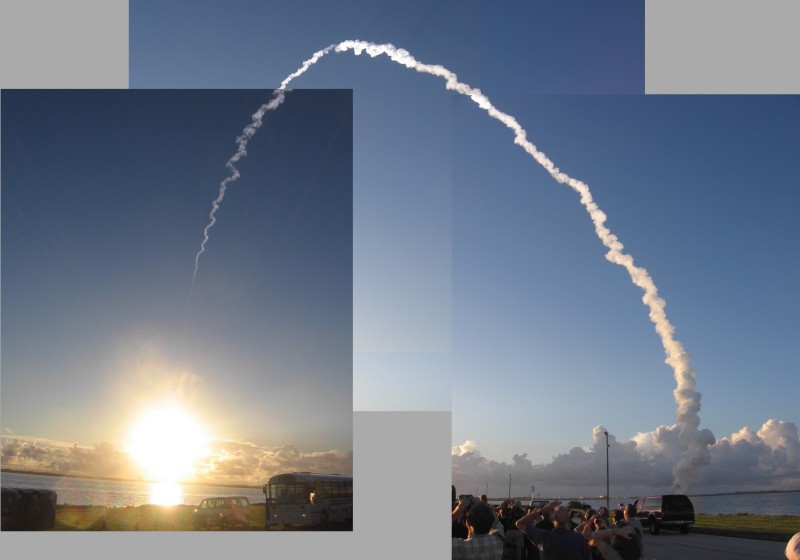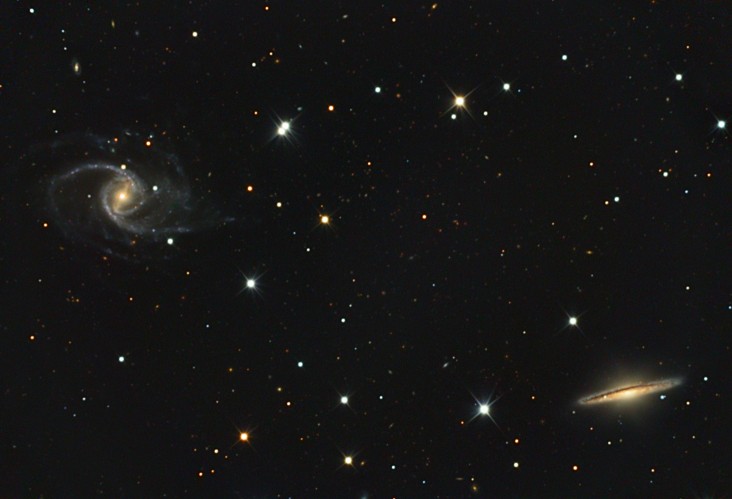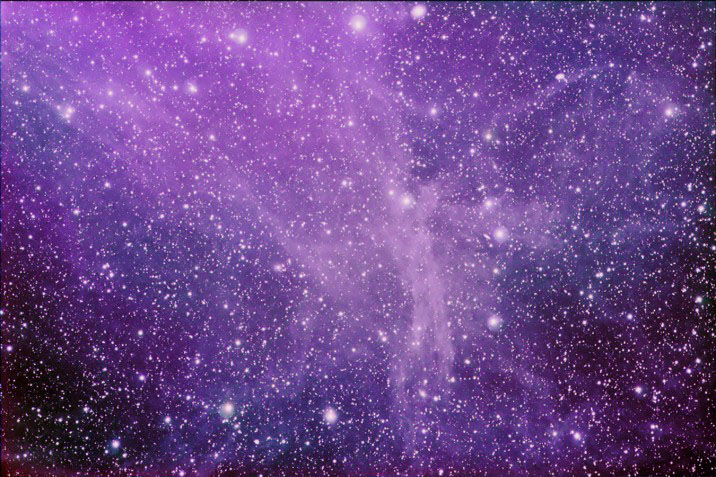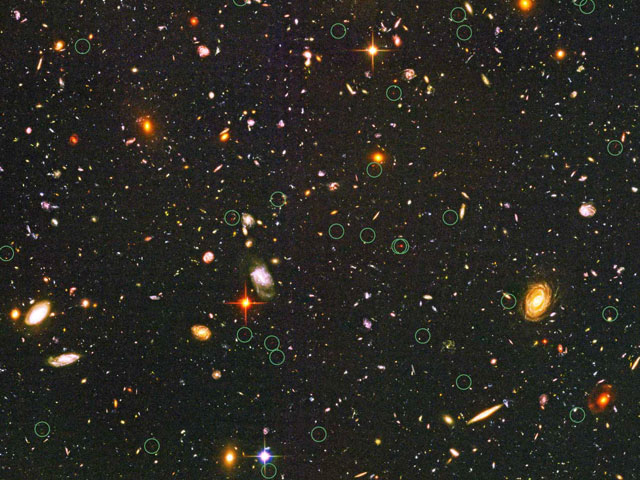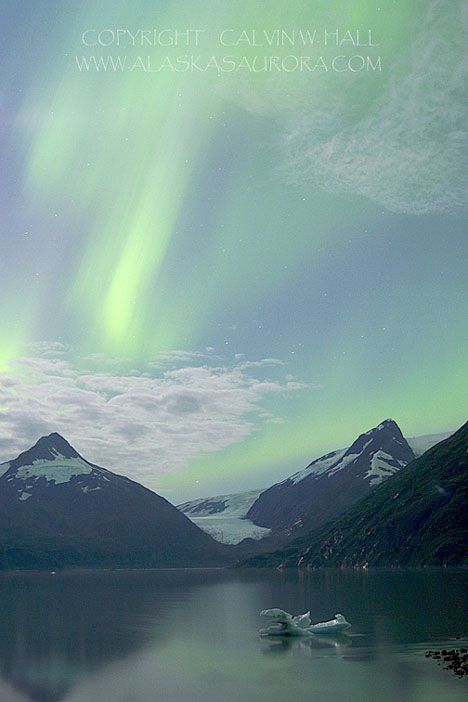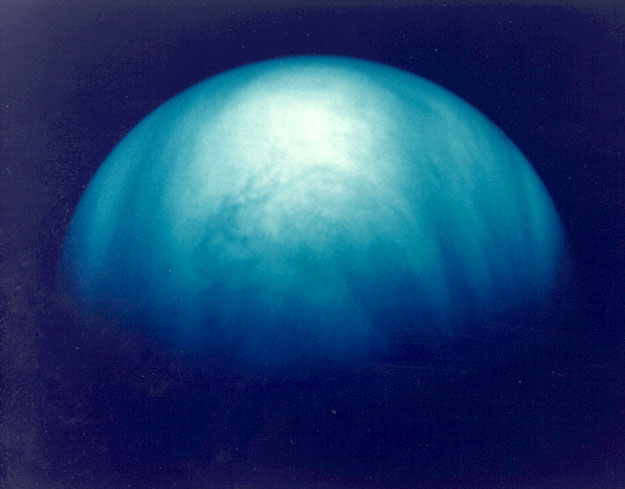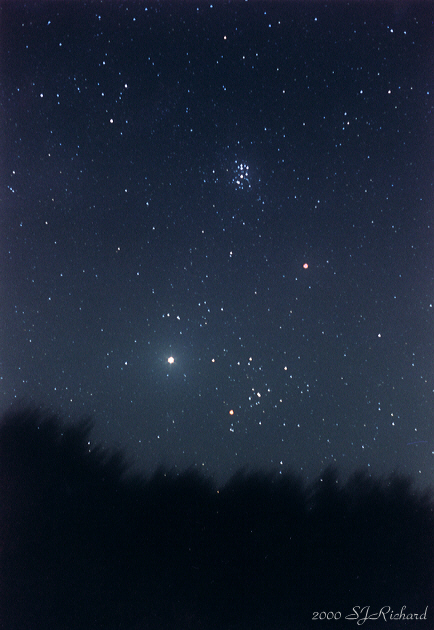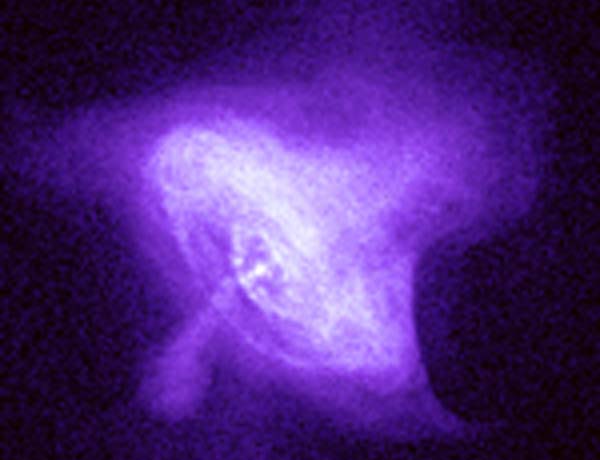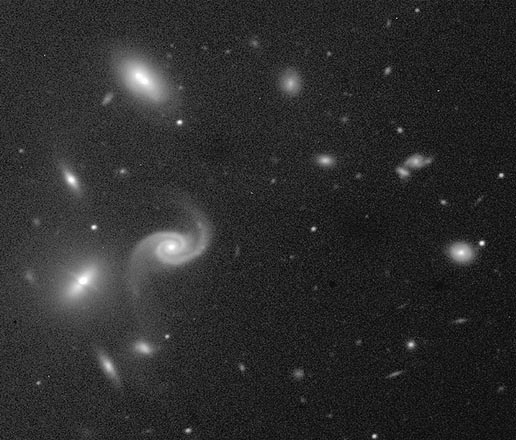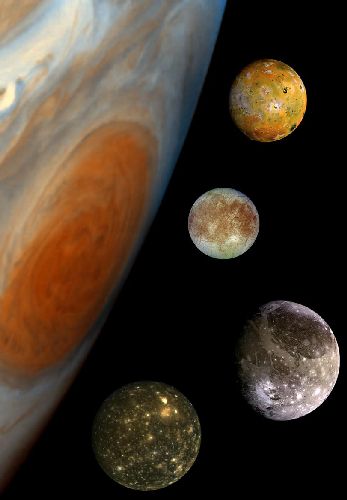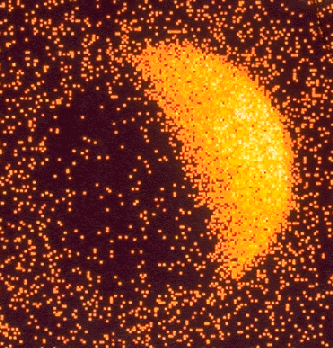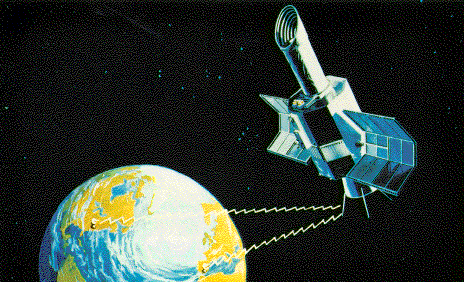2014 How did these Martian rocks form? As the robotic Curiosity rover has approached Pahrump Hills on Mars, it has seen an interesting and textured landscape dotted by some unusual rocks. The featured image shows a curiously round rock spanning about two centimeters across. Seemingly a larger version of numerous spherules dubbed blueberries found by the Opportunity rover on Mars in 2004, what caused this roundness remains unknown. Possibilities include frequent tumbling in flowing water, sprayed molten rock in a volcanic eruption, or a concretion mechanism. The inset image, taken a few days later, shows another small but unusually shaped rock structure. As Curiosity rolls around and up Mount Sharp, different layers of the landscape will be imaged and studied to better understand the ancient history of the region and to investigate whether Mars could once have harbored life.
2013 The dust sculptures of the Eagle Nebula are evaporating. As powerful starlight whittles away these cool cosmic mountains, the statuesque pillars that remain might be imagined as mythical beasts. Pictured above is one of several striking dust pillars of the Eagle Nebula that might be described as a gigantic alien fairy. This fairy, however, is ten light years tall and spews radiation much hotter than common fire. The greater Eagle Nebula, M16, is actually a giant evaporating shell of gas and dust inside of which is a growing cavity filled with a spectacular stellar nursery currently forming an open cluster of stars. The above image in scientifically re-assigned colors was released in 2005 as part of the fifteenth anniversary celebration of the launch of the Hubble Space Telescope.
2012 Like delicate cosmic petals, these clouds of interstellar dust and gas have blossomed 1,300 light-years away in the fertile star fields of the constellation Cepheus. Sometimes called the Iris Nebula and dutifully cataloged as NGC 7023 this is not the only nebula in the sky to evoke the imagery of flowers. Still, this remarkable image shows off the Iris Nebula's range of colors and symmetries in impressive detail. Within the Iris, dusty nebular material surrounds a hot, young star. The dominant color of the brighter reflection nebula is blue, characteristic of dust grains reflecting starlight. Central filaments of the dusty clouds glow with a faint reddish photoluminesence as some dust grains effectively convert the star's invisible ultraviolet radiation to visible red light. Infrared observations indicate that this nebula may contain complex carbon molecules known as PAHs. The bright blue portion of the Iris Nebula is about six light-years across.
2011 In this crowded starfield spanning some 3 degrees within the high flying constellation Cygnus, the eye is drawn to the Cocoon Nebula. A compact star forming region, the cosmic Cocoon punctuates a long trail of obscuring interstellar dust clouds. Cataloged as IC 5146, the nebula is nearly 15 light-years wide, located some 4,000 light years away. Like other star forming regions, it stands out in red, glowing, hydrogen gas excited by the young, hot stars and blue, dust-reflected starlight at the edge of an otherwise invisible molecular cloud. In fact, the bright star near the center of this nebula is likely only a few hundred thousand years old, powering the nebular glow as it clears out a cavity in the molecular cloud's star forming dust and gas. But the long dusty filaments that appear dark in this visible light image are themselves hiding stars in the process of formation, seen at infrared wavelengths.
2010 If you look closely at the Moon, you will see a large airplane in front of it. Well, not always. OK, hardly ever. But if you wait for days with your camera attached to a Moon tracker in a place where airplanes are known to pass, you might catch a good photograph of it. Well, if you're lucky. OK, extremely lucky. The above image was taken two weeks ago over South East Queensland, Australia using an exposure time of 1/250th of a second and, in the words of the photographer, "a nerve of steel".
2009 The constellation of Orion holds much more than three stars in a row. A deep exposure shows everything from dark nebula to star clusters, all imbedded in an extended patch of gaseous wisps in the greater Orion Molecular Cloud Complex. The brightest three stars on the far left are indeed the famous three stars that make up the belt of Orion. Just below Alnitak, the lowest of the three belt stars, is the Flame Nebula, glowing with excited hydrogen gas and immersed in filaments of dark brown dust. Below the frame center and just to the right of Alnitak lies the Horsehead Nebula, a dark indentation of dense dust that has perhaps the most recognized nebular shapes on the sky. On the upper right lies M42, the Orion Nebula, an energetic caldron of tumultuous gas, visible to the unaided eye, that is giving birth to a new open cluster of stars. Immediately to the left of M42 is a prominent bluish reflection nebula sometimes called the Running Man that houses many bright blue stars. The above image, a digitally stitched composite taken over several nights, covers an area with objects that are roughly 1,500 light years away and spans about 75 light years.
2008 Is there any place in the world you could see a sight like this? Yes! This digital mosaic shows the night sky as seen from False Kiva in Canyonlands National Park, eastern Utah, USA. Diving into the Earth far in the distance is part of the central band of our Milky Way Galaxy. Much closer, the planet Jupiter is visible as the bright point just to band's left. Closer still are the park's picturesque buttes and mesas lit by a crescent moon. In the foreground is the cave housing a stone circle of unknown origin named False Kiva. The cave itself was briefly lit by flashlight during the exposure. Astrophotographer Wally Pacholka reports that getting to the cave was no easy trek. Also, mountain lions were a concern while waiting alone in the dark to record the mosaic.
2007 Shortly after sunrise on Thursday at Cape Canaveral Air Force Station, the Dawn spacecraft began its journey to the asteroid belt, arcing eastward into a blue and cloudy sky. Dawn's voyage began on a conventional, chemically fueled Delta II rocket, but will continue with an innovative ion propulsion system. The spacecraft's extremely efficient ion engines will use electricity derived from solar power to ionize xenon atoms and generate a gentle but continuous thrust. After a four year interplanetary cruise, Dawn will orbit two small worlds, first Vesta and then Ceres. Vesta is one of the largest main belt asteroids, while nomenclature introduced by the International Astronomical Union in 2006 classifies nearly spherical Ceres as a dwarf planet.
2006 These two beautiful galaxies, NGC 5905 (left) and NGC 5908 lie about 140 million light-years distant in the northern constellation Draco. Separated by about 500,000 light-years, the pair are actually both spiral galaxies and nicely illustrate the striking contrasts in appearance possible when viewing spirals from different perspectives. Seen face-on, NGC 5905 is clearly a spiral galaxy with bright star clusters tracing arms that wind outward from a prominent central bar. Oriented edge-on to our view, the spiral nature of NGC 5908 is revealed by a bright nucleus and dark band of obscuring dust characteristic of a spiral galaxy's disk. In fact, NGC 5908 is similar in appearance to the well studied edge-on spiral galaxy M104 - The Sombrero Galaxy.
2005 The combined light of the stars of the Milky Way are reflected by this cosmic dust cloud that soars some 300 light-years above the plane of our Galaxy. Dubbed the Angel Nebula by astronomer Steve Mandel's 13 year old son, the dusty apparition is part of an expansive complex of dim and relatively unexplored diffuse nebulae, traced over large regions seen toward the North and South Galactic poles. Along with the blue tint characteristic of more commonly observed reflection nebulae, the Angel Nebula and other dusty galactic cirrus also produce a faint reddish luminescence, as dust grains convert the Milky Way's invisible ultraviolet radiation to visible red light. Spanning 3x4 degrees on the sky in the constellation Ursa Major, this wide-angle, high-resolution image was recorded as part of the Unexplored Nebula Project.
2004 When did galaxies form? Faint red smudges identified on the deepest optical sky image ever taken may well be members of the first class of galaxies. Detailed inspection of the Hubble Ultra Deep Field (HUDF), taken by the Advanced Camera for Surveys on the Hubble Space Telescope, found the galaxies, circled above, and used their distance and abundance to probe the universe when it was only a few percent of its present age. Analyses indicate that the discovered class of galaxies is exclusively composed of these smaller dwarf galaxies from which larger modern galaxies must have formed. Some large modern galaxies make a colorful foreground to the above HUDF. The first class of dwarf galaxies likely contained energetic stars emitting light that transformed much of the remaining normal matter in the universe from a cold gas to a hot ionized plasma.
2003 Auroras can make spectacular sights. Photographed above, flowing green auroras help the Moon illuminate the serene Portage Lake and the snowy Chugach Mountains near Anchorage, Alaska, USA. Although auroras might first appear to be moonlit clouds, they only add light to the sky and do not block background stars from view. Called northern lights in the northern hemisphere, auroras are caused by collisions between charged particles from the magnetosphere and air molecules high in the Earth's atmosphere. If viewed from space, auroras can be seen to glow in X-ray and ultraviolet light as well. Predictable auroras likely occur a few days after a powerful magnetic event has been seen on the Sun.
2002 Venus, the second closest planet to the Sun, is a popular way-point for spacecraft headed for the gas giant planets in the outer reaches of the solar system. Why visit Venus first? Using a "gravity assist " maneuver, spacecraft can swing by planets and gain energy during their brief encounter saving fuel for use at the end of their long interplanetary voyage. This colorized image of Venus was recorded by the Jupiter-bound Galileo spacecraft shortly after its gravity assist flyby of Venus in February of 1990. Galileo's glimpse of the veiled planet shows structure in swirling sulfuric acid clouds. The bright area is sunlight glinting off the upper cloud deck. A recent intriguing but controversial hypothesis holds that living microbes might exist in the upper clouds of Venus.
2001 The ultraviolet light emitted by eleven times ionized iron at temperatures over 2 million degrees Farenheit was used to record the above picture of the Sun on September 22, the date of the autumnal equinox. The image was made by the EIT camera onboard the SOHO spacecraft, a space observatory which can continuously observe the Sun. Eleven times ionized iron is atomic iron with eleven of its electrons stripped away. Here the electrons are stripped by the frantic collisions with other atoms and electrons which occur at the extreme temperatures in the Solar Corona. Since electrons are negatively charged, the resulting ionized iron atom is highly positively charged. Astronomer's "shorthand" for eleven times ionized iron is written "Fe XII", the chemical symbol for iron followed by a Roman numeral 12 (Fe I is neutral iron).
2000 Star clusters, planets, and a red giant posed for this portrait of the night sky from rural Jasper County, Iowa, USA. Astrophotographer Stan Richard recorded the four minute time exposure looking east around midnight on September 3rd at Ashton-Wildwood Park. To avoid star trails, his camera was mounted on a barndoor-style tracker to compensate for the Earth's rotation. Can you identify his celestial subjects? (Click on the image for a labeled version.) The Pleiades and Hyades, the closest open or galactic star clusters to the Sun, should be recognizable to beginning stargazers. Of course gas giant Jupiter rules as the brightest object in the picture and the largest planet in the Solar System, but second largest planet Saturn is also visible nearby. For sheer size cool red giant star Aldebaran is more impressive though, spanning about forty times the diameter of the Sun. Sixty light-years away and yellowish in this picture, Aldebaran is known as Alpha Tauri, the brightest star in Taurus, the Bull.
1999 Why does the Crab Nebula still glow? In the year 1054 A.D. a supernova was observed that left a nebula that even today glows brightly in every color possible, across the entire electromagnetic spectrum. At the nebula's center is an ultra-dense neutron star that rotates 30 times a second. The power liberated as this neutron star slows its rotation matches the power radiated by the Crab Nebula. The above picture by the recently launched Chandra X-Ray Observatory shows new details of the nebula's center in X-ray light, yielding important clues to how the neutron star powers the nebula. Visible are rings of high-energy particles that are being flung outward near light-speed from the center, and powerful jets emerging from the poles. Astrophysicists continue to study and learn from this unusual engine which continually transfers 30 million times more power than lightning at nearly perfect efficiency.
1998 Far across the universe, an unusual cluster of galaxies has been evolving. A diverse group of galaxies populate this cluster, including, on the left, an unusual galaxy showing an equatorial polar ring and a large spiral. Above looms a large elliptical galaxy. The reason for the small size of galaxies on the right is not yet known - these galaxies might be smaller or might just lie even farther in the distance. Almost every spot in this picture is a galaxy. Studying distant clusters like this may help astronomers better understand when and how these cosmic giants formed.
1997 This composite image features classic portraits of members of one of the Solar System's most prominent families - Jupiter and its four large "Galilean" moons. Starting from the top the moons are Io, Europa, Ganymede, and Callisto. The top-to-bottom order is also the order of increasing distance from Jupiter. These are big moons indeed which attend the largest planet. The smallest of the lot, Europa, is the size of Earth's moon while Ganymede is the largest moon in the Solar System. In fact, Ganymede with a diameter of 3,100 miles, is larger than the planets Mercury and Pluto. The swirling Great Red Spot appears at the edge of Jupiter. A hurricane-like storm system that has persisted for over 300 years, two to three earths could fit inside it. Battered Callisto's image was recorded during the 1979 flyby of Voyager. The other portraits were taken by the Galileo spacecraft which began exploring the Jovian system in 1995.
1996 This X-Ray image of the Moon was made by the orbiting Roentgen Observatory Satellite (ROSAT) in 1990. It shows three distinct regions: a bright X-ray sky, a bright part of the Moon, and a relatively dark part of the Moon. The bright X-ray sky is due to the diffuse cosmic X-ray background. The bright lunar crescent shines because it reflects X-rays emitted by the Sun. The dark lunar face is in shadow and so stands stands out from the relatively bright background - but, surprisingly it is not completely dark! Where do those X-rays from? They are currently thought to result from energetic particles from the solar wind bombarding the lunar surface.
1995 The International Ultraviolet Explorer (IUE) was launched by a NASA Delta rocket in 1978 to provide a space telescope for ultraviolet astronomy. A collaborative project among NASA, ESA and the British SRC (now PPARC) agencies, IUE's estimated lifetime was 3 to 5 years. Amazingly, 17 years and 8 months later, it continues to operate, having made over 100,000 observations of comets, planets, stars, novae, supernovae, galaxies, and quasars. The IUE story is a truly remarkable but little known success story which will continue. To reduce costs, on September 30, 1995, the IUE team at GSFC will turn over its science operations to the ESA ground station in Villafranca, Spain where the ESA/PPARC teams will continue to make astronomical observations. Congratulations to the GSFC team for outstanding service to astronomy. Good luck to IUE and best wishes for continued success!
| << Previous | Index | Next >> |
